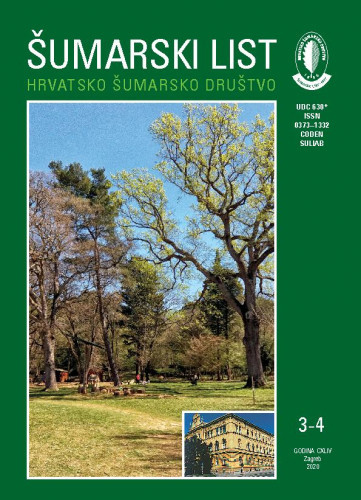Svi objekti reflektiraju, apsorbiraju ili emitiraju elektromagnetsko zračenje ovisno o sastavu, stvarajući jedinstvene uzorke koje zovemo spektralni potpisi ili endmemberi. Čisti spektralni uzorci definiraju se u idealnim terenskim ili laboratorijskim uvjetima, gdje je spektar refleksije dobiven uporabom spektroradiometra fokusiranog na jednu površinu. Prema istraživanjima, većina spektralno čistih uzoraka odnosi se na istraživanja minerala. Spektralni potpisi vegetacije, za razliku od spektralnih potpisa minerala, su dinamični (u spektralnoj, prostornoj i vremenskoj rezoluciji), znatno zahtjevniji za prikupljanje i dokumentiranje, te ih treba s oprezom ugraditi u spektralne knjižnice. Postoji nekoliko spektralnih knjžnica (većih i manjih) koje su organizirane po poglavljima, a sastoje se od uzoraka koji imaju dovoljan broj analiza i dokumentaciju za utvrđivanje kvalitete spektra. U ovome istraživanju izdvojeni su spektralni potpisi za nekoliko vrsta u Hrvatskoj: hrast lužnjak (Quercus robur L.), običnu bukvu (Fagus sylvatica L.), običnu jelu (Abies alba Mill.), običnu smreku (Picea abies L.), bijelu imelu (Viscum album L. ssp. Abietis (Weisb.)) i žutu imelu (Loranthus europaeus Jacq.). Svrha istraživanja je bila uspostaviti spektralnu knjižnicu za buduća istraživanja primjene hiperspektralnih skenera pri detekciji vrsta drveća. Za prikupljanje spektralnih potpisa korišten je hiperspektralni linijski skener ImSpector V9, koji snima vidljivi i bliži infracrveni dio spektra od 430 do 900 nm. Osim njega korišten je i senzor sunčevog zračenja FODIS, kako bi dobili prosječnu vrijednost sunčeve insolacije u trenutku snimanja. Snimanje je provedeno u kontroliranim uvjetima. Uzorci su postavljeni na kružnu podlogu sa naznačenom podjelom za svakih 45 stupnjeva točno u centru optičke osi skenera, te su rotirani kružno. Spektralne snimke su zatim obrađivane u softveru ImageJ gdje su izdvojeni podaci za daljnju analizu.; All objects reflect, absorb or emit electromagnetic radiation depending on the composition, creating unique patterns called spectral signatures or endemembers. Pure spectral samples are defined in ideal field or laboratory conditions, where the spectrum of reflection is obtained using a spectroradiometer focused on one surface. According to researches, most spectral-pure samples refer to mineral exploration. Spectral signatures of vegetation, unlike minerals, are dynamic (in spectral, spatial and temporal resolution), considerably demanding for collecting and documenting, and need to be incorporated with caution in spectral libraries. There are several spectral libraries (bigger and smaller) that are organized by chapters which consist of samples that are adequately reviewed and documented to determine the spectrum quality. In this study, the spectral signatures for several species in Croatia were isolated: Oak (Quercus robur L.), Common Beech (Fagus sylvatica L.), Silver fir (Abies alba Mill.), Norway spruce (Picea abies L.), White-berried mistletoe (Viscum album L. ssp. Abietis (Weisb.)) and Yellow Mistletoe (Loranthus europaeus Jacq.). The purpose of the research was to establish a spectral library for future research into hyperspectral scanners for tree species detection. For collecting spectral signatures, the hyperspectral line scanner ImSpector V9 was used to capture the visible and near infrared spectrum (430-900 nm). In addition, the FODIS solar radiation sensor was used to obtain the average value of the solar insolation at the time of recording. Recording was performed under controlled conditions. Samples were placed on the circular base with the indicated division for every 45 degrees exactly in the center of the optical axis of the scanner and were rotated circularly. Spectral images were then processed in ImageJ software where data was extracted for further analysis.
Sažetak

 Šumarski list : znanstveno-stručno i staleško glasilo Hrvatskoga šumarskog društva = journal of the Forestry Society of Croatia = Zeitschrift des Kroatischen Forstvereins = revue de la Societe forestiere Croate : 144, 3/4(2020) / glavni urednik Josip Margaletić.
Šumarski list : znanstveno-stručno i staleško glasilo Hrvatskoga šumarskog društva = journal of the Forestry Society of Croatia = Zeitschrift des Kroatischen Forstvereins = revue de la Societe forestiere Croate : 144, 3/4(2020) / glavni urednik Josip Margaletić.